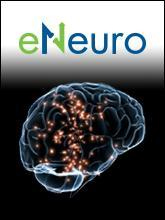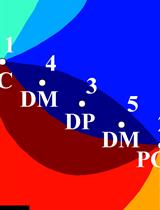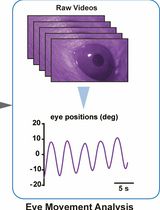- EN - English
- CN - 中文
Low- and High-resolution Dynamic Analyses for Magnetic Resonance Spectroscopy Data
磁共振光谱数据的低高分辨率动态分析
发布: 2021年01月20日第11卷第2期 DOI: 10.21769/BioProtoc.3892 浏览次数: 3306
评审: Zijian ZhangHélène LégerMasashi AsaiAnonymous reviewer(s)
Abstract
Magnetic resonance spectroscopy (MRS) can be used to measure in vivo concentrations of neurometabolites. This information can be used to identify neurotransmitter involvement in healthy (e.g., perceptual and cognitive processes) and unhealthy brain function (e.g., neurological and psychiatric illnesses). The standard approach for analyzing MRS data is to combine spectral transients acquired over a ~10 min scan to yield a single estimate that reflects the average metabolite concentration during that period. The temporal resolution of metabolite measurements is sacrificed in this manner to achieve a sufficient signal-to-noise ratio to produce a reliable estimate. Here we introduce two analyses that can be used to increase the temporal resolution of neurometabolite estimates produced from MRS measurements. The first analysis uses a sliding window approach to create a smoothed trace of neurometabolite concentration for each MRS scan. The second analysis combines transients across participants, rather than time, producing a single “group trace” with the highest possible temporal resolution achievable with the data. These analyses advance MRS beyond the current “static” application by allowing researchers to measure dynamic changes in neurometabolite concentration and expanding the types of questions that the technique can be used to address.
Keywords: Magnetic resonance spectroscopy (磁共振波谱学)Background
Magnetic resonance spectroscopy (MRS) can be used in vivo to measure the concentration of neurometabolites within the brain. The blood-oxygen-level-dependent signal measured using functional magnetic resonance imaging (fMRI) can provide evidence of neural activity. However, MRS can provide evidence that can be used to distinguish between different types of activity, e.g., excitatory and inhibitory. For the purpose of understanding neural mechanisms, identifying the involvement of neurotransmitter systems that support sensory/cognitive processes can be more informative than locating regions of neural representation.
The methodological approaches used to investigate sensory/cognitive processing with MRS can be separated into two categories: correlational and functional. The common correlational approach is to measure the concentration of metabolites in a group of participants, within a brain region of interest, and test whether individual variance of a particular metabolite is related to performance on a task supported by the sensory/cognitive process (Edden et al., 2009; Rideaux and Welchman, 2018).
A common functional approach used to identify metabolite involvement is to measure baseline metabolite concentration while a participant is “at rest” and compare this with another measurement taken while the participant performs a task. A difference in metabolite concentration observed between the two measurements may be taken as evidence of its involvement in the sensory/cognitive processes supporting the task (Kurcyus et al., 2018; Rideaux et al., 2019).
While MRS can be used to differentiate excitatory and inhibitory transmission within the brain, compared to fMRI, it is severely limited in terms of its temporal resolution, which is constrained by the signal-to-noise ratio of measurements acquired using the technique. Although the duration that restricts the temporal resolution of MRS (i.e., the relaxation time) can be similar to that of fMRI (i.e., ~2 s), in order to yield a reliable estimate of metabolite concentration from within the brain, multiple transients must be combined to reach a sufficient signal-to-noise ratio (Mikkelsen et al., 2018). For example, it is common to combine between 200-300 transients (~10 min) to produce a single measure of metabolite concentration (Puts and Edden, 2012).
The information provided using this approach is severely limited. In particular, by reducing the measure of neurometabolite concentration to a single estimate averaged across an experimental condition, dynamic changes in concentration during this period are obscured. By contrast, establishing the temporal dynamics in neurometabolite concentration reveals the timing and magnitude of change in different neurotransmitters and novel relationships between neurotransmitters. This information is essential for a comprehensive understanding of the role of neurotransmitters in sensory and cognitive processes, and may inform our understanding of the balance between excitation and inhibition, which is thought to be a key factor in multiple neurological and psychiatric illnesses (Bradford, 1995; Rubenstein and Merzenich, 2003; Kehrer et al., 2008).
Here we describe two analyses that can be used to estimate dynamic neurometabolite concentration from MRS spectra. The first analysis uses a sliding window approach to create a smoothed trace of neurometabolite concentration for each MRS scan. The second analysis combines transients across participants, rather than time, producing a single “group trace” with the highest possible temporal resolution achievable with the data.
Equipment
3-tesla MRI scanner unit (Siemens PRISMA, Siemens Healthcare)
32-channel head coil for MRI signal reception (Siemens PRISMA, Siemens Healthcare)
Software
MATLAB R2018B (The MathWorks, www.mathworks.com)
Procedure
文章信息
版权信息
© 2021 The Authors; exclusive licensee Bio-protocol LLC.
如何引用
Rideaux, R. (2021). Low- and High-resolution Dynamic Analyses for Magnetic Resonance Spectroscopy Data. Bio-protocol 11(2): e3892. DOI: 10.21769/BioProtoc.3892.
分类
神经科学 > 感觉和运动系统 > 视觉系统
神经科学 > 基础技术 > 神经代谢物
系统生物学 > 代谢组学 > 神经代谢物
您对这篇实验方法有问题吗?
在此处发布您的问题,我们将邀请本文作者来回答。同时,我们会将您的问题发布到Bio-protocol Exchange,以便寻求社区成员的帮助。
提问指南
+ 问题描述
写下详细的问题描述,包括所有有助于他人回答您问题的信息(例如实验过程、条件和相关图像等)。
Share
Bluesky
X
Copy link












